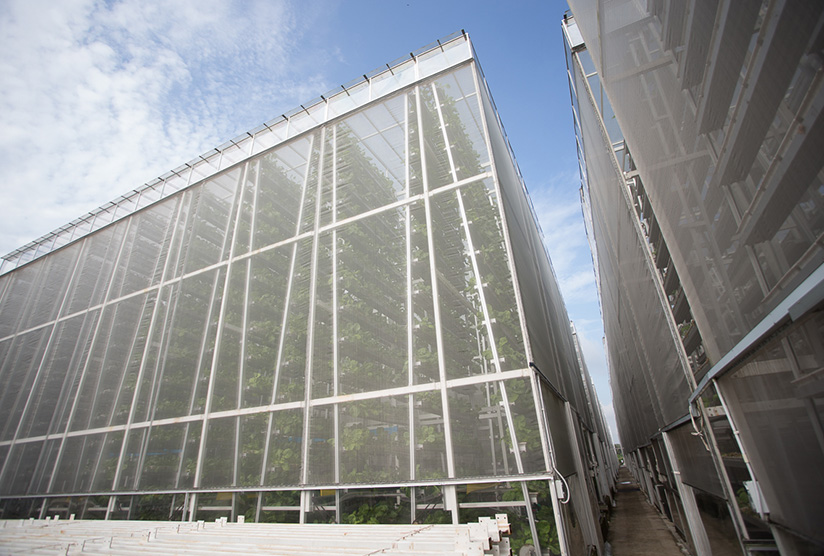The Urban Farm
Living in Minneapolis has many benefits, one being the plethora of farmers markets to choose from year round. One problem with the city though is the climate. Our cold winters mean I rarely find local fruits and vegetables after October and before May. While this might sound like a standard problem for northern cities, some are breaking the mold and growing crops year round. The logical answer is a greenhouse out on the rural fringe, however some cities are taking it to the next level. They are growing acres of crops on small city blocks. The answer they have found is a vertical greenhouse.
One of the first of its kind was installed in Jackson, Wyoming. The 13,500 square foot structure was built by Vertical Harvest next to a parking garage on city land. The building is essentially three greenhouses stacked on top of one another, each with their own micro climates specific to the type of plants they host. They project that the 1/10th of an acre site could eventually produce five acres worth of produce. Their annual yield saves 100,000 lbs of produce from being trucked into the city each year.
The Jackson, Wyoming vertical garden (photo courtesy of the Huffington Post)
This kind of production not only has the potential to solve food dessert problems common in many communities, but to expand the solution globally. The vertical garden does not require the use of large farm equipment or delivery trucks, helping with the carbon footprint. They are a self contained system, shielded from normal crop concerns of bugs, drought, and disease and therefore far more productive without the added chemicals.
Interior image at the Sky Greens vertical garden in Singapore (photo courtesy of skygreens.com
These projects do not happen over night. Like most new advancements in technology, they take time and perseverance. The Jackson, Wyoming project took almost eight years from concept to completion. They celebrated their grand opening in May 2016. Vertical gardens are on the cutting edge of urban food systems. The ones in operation have been a huge success in supporting the communities they are within. Additional vertical gardens exist in Singapore, Chicago, Scranton, PA, and in various parts of Japan.
Sky Greens vertical greenhouse in Singapore (photo courtesy of www.futurereadysingapore.com
Advancements to this technology will only continue to improve production as more vertical gardens are built and methods of construction and operation are tested. These urban innovations are the next wave of agriculture, ushering in an era of readily available fresh food for communities throughout the world.








